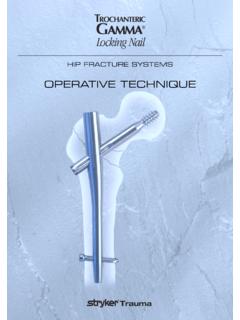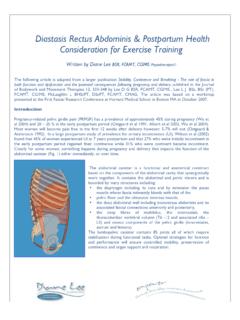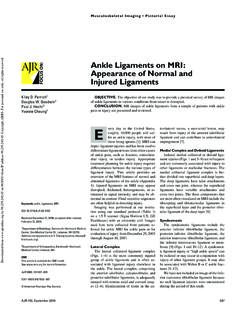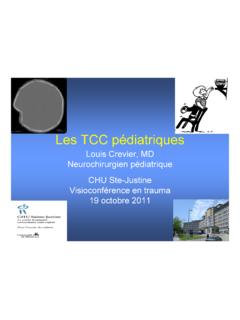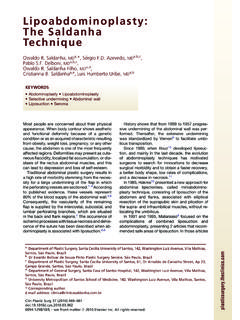Transcription of HIP FRACTURE SYSTEMS - Stryker
1 HIP FRACTURE SYSTEMSPIN SYSTEMINDEXI ntroduction2 Indications3 Features & BenefitsSlipped Capital Femoral Epiphysis4 Intracapsular Femoral Neck Fracture5 Operative TechniqueSlipped Capital Femoral EpiphysisIntroduction81 Patient Positioning & Reduction82 Stabilization Guide-Wire Insertion93 Incision94 Guide-Wire Insertion95 Drilling & Measurement106 Pin / Introducer Assembly107 Pin Insertion11 Case Report12 Femoral Neck Fracture1 Patient Positioning & Reduction142 Incision143 Distal Guide-Wire Insertion144 Distal Drilling155 Proximal Drilling156 Proximal Drilling (cont.)
2 167 Pin / Introducer Assembly168 Proximal Pin Insertion179 Distal Pin Insertion17 Case Report18 Pin Removal19 Ordering Information20 References1 Slipped Capital Femoral Epipysis212 Femoral Neck Fractures21 & 222 INTRODUCTIONThe Hansson Pin system, designed by ProfessorLars Ingvar Hansson at the University of Lund inSweden, was developed from research into theeffects of osteosynthetic devices on the bloodsupply to the femoral developed for the treatment ofintracapsular femoral neck fractures, the HanssonPin system has been designed to minimise surgicaltrauma to the patient and offer secure, stablefixation with reduced risk of healing complicationsfor all grades of years of successful clinical studies carriedout (6 theses and more than 70 published articles)has enhanced the Hansson Pin System to itscurrent Hannson (1982): Osteosynthesis with the Hook-Pin in Slipped CapitalFemoral Epiphysis.
3 Acta Orthop. Scand. 53: 87-962. Stromqvist B., Hansson (1984): Femoral head vitality in femoral neckfracture after Hook-Pin Internal Fixation. Clin. Orthop. 191: 105-1093. Stromqvist B., Hansson , Nilsson , and Thorngren (1987): Hook-Pin Fixation in femoral neck fractures. A two year follow-up study of 300cases. Clin. Orthop. 218: 58-624. Ceder L., Stromqvist B., Hansson (1987): Effects of strategy changes in thetreatment of femoral neck fractures during a 17 year period. Clin. : 53-575. Bray , Smith-Hoeffer B., Hooper A., Timmerman L. (1988): The displacedfemoral FRACTURE .
4 Clin. Orthop. 230: 127-1406. Comprehensive Care of Hip Fractures. Bauer , Hansson , Lidgren L.,Stromqvist B., Thorngren , Scientific Exhibit. - Las Vegas andSubcapital NeckFracturesBasal NeckFracturesSlipped CapitalFemoral EpiphysisPEDIATRIC:ADULT:4 FEATURES & BENEFITSP reventing diastasis and furtherdisplacement of the epiphysisThe risk of further peroperative displacement of thefemoral head is reduced by drilling a channel forthe Hansson Pin with the femoral head fixed withkirschner wires. The smooth outer pin allows thesurgeon to gently push the implant through thechannel, reducing the risk of diastasis between thefemoral neck and the fixationThe hook resists loosening of the fixation to thefemoral head as the longitudinal growth of thefemoral neck retracts the pin in the channelthereby stabilizing the femoral head.
5 Loosening ofthe osteosynthetic material is reduced because ofresorption and growth of the femoral neck undernormal the risk of unequal bonelengthThe growth of the femoral neck in cases withSlipped Capital Femoral Epiphysis, is an indicationof a lack of intra- and postoperative vasculardisturbance, as the nutrition for the proliferatingcells of the growth plate is provided by theepiphysial vessels. By preserving the blood supply,the Hansson Pin System is reducing the risk ofunequal bone extractionThe risk of the pin being trapped in the bone isreduced as the pin surface is smooth.
6 The hook iseasily withdrawn back into the body of the pin,which can then be viewLateral viewSLIPPED CAPITALFEMORAL EPIPHYSIS5 FEATURES & BENEFITSPRESERVES BONE INTEGRITY Minimum Bone minimum disruption to cancellous bone,and no additional fixation points are required inthe femoral the risk of avascular necrosis. Reducesthe risk of secondary THE BLOOD SUPPLY Minimum Surgical smooth profile allows the pins to slide intoplace without turning or hammering. Thisminimises disruption to the blood supply and theconsequent danger of avascular the risks of segmental collapse SURGERY Small complete procedure is carried out through a4-5cm incision.
7 Short instrumentation and uncomplicatedprocedure allow fixation to be achieved withinan average of 15 minutes. The procedure lendsitself to spinal anaesthesia. Simple Implant procedure for pin removal is quick anaesthetic related EARLY MOBILISATION Stable security and stability of fixation allow mostpatients to be mobilised during their first post-operative day and discharged the risks of prolonged bed restfollowing surgery. Offers potential cost savingsto the NECKFRACTUREI nferior pin contacts inferiorcortex of the femoral pin contactsposterior SECURE FIXATION Optimum Resistance to pin placement within the neckprovides maximum resistance to Maximum Use of Cortical pin contacts strong cortical bone in threeplaces to provide maximum stability.
8 Firm hook of each pin engages in subchondralbone to provide secure anchorage and preventmigration or backing Hansson Pin System does not rely on softcancellous bone for support in either fragmentand the risk of displacement is the risks of redisplacement and BONY CONTACT Precise Parallel parallel placement enables the pins toslide within the main bone fragment to ensurecontinuous bony contact even during physiological compression at the the risk of encourages bone & BENEFITSS imple instrumentation ensuresprecise parallel point contact with cortical boneprovides maximum placement of thepins ensure continuouscompression at thefracture section of thefemoral neckshowing pinlocation in 70consecutivefractures67 OPERATIVE TECHNIQUESLIPPED CAPITALFEMORAL EPIPHYSIS8 OPERATIVE TECHNIQUESLIPPED CAPITAL FEMORAL EPIPHYSISSTRONG, STABLE FIXATIONTHROUGH A SIMPLE ANDPRECISE PROCEDUREThe osteosynthesis consists of a cylindrical pininserted in a drill hole and attached to thefemoral head.
9 The drill hole and pin runs atright angles to the growth zone and is,depending on the degree of slipping, relativelycentrally located in the femoral neck andhead. The pin is 10-20 mm longer than thedrill hole in order to permit growth in thelength of the femoral neck. Slipping up to 60 can be stabilised by viewLateral view1 Patient Positioning & ReductionThe degree of slipping should be thoroughlyinvestigated by X-ray examinationpreoperatively. Reduction should only beperformed if there is pronounced slippingwithout signs of corresponding periosteal boneformation in the femoral is recommended during theoperation.
10 The image should include the head,neck and proximal femur down to the lessertrochanter. The proximal femur should bepositioned so that the neck is parallel to theradiation beam in the lateral projection. Thefoot should therefore be rotated inwards andfixed in 30-60 inward 9 OPERATIVE TECHNIQUESLIPPED CAPITAL FEMORAL EPIPHYSIS2 Stabilisation Guide-Wire InsertionAguide wire is inserted percutaneously in thetrochanteric region into the femoral neck andhead for stabilisation during the mm longitudinal subtrochantericincision is made and the fascia lata is dividedin the direction of the InsertionThe guide wire is inserted through the the AP-view the tip of the guide wire shouldbe level with the lesser trochanter.



